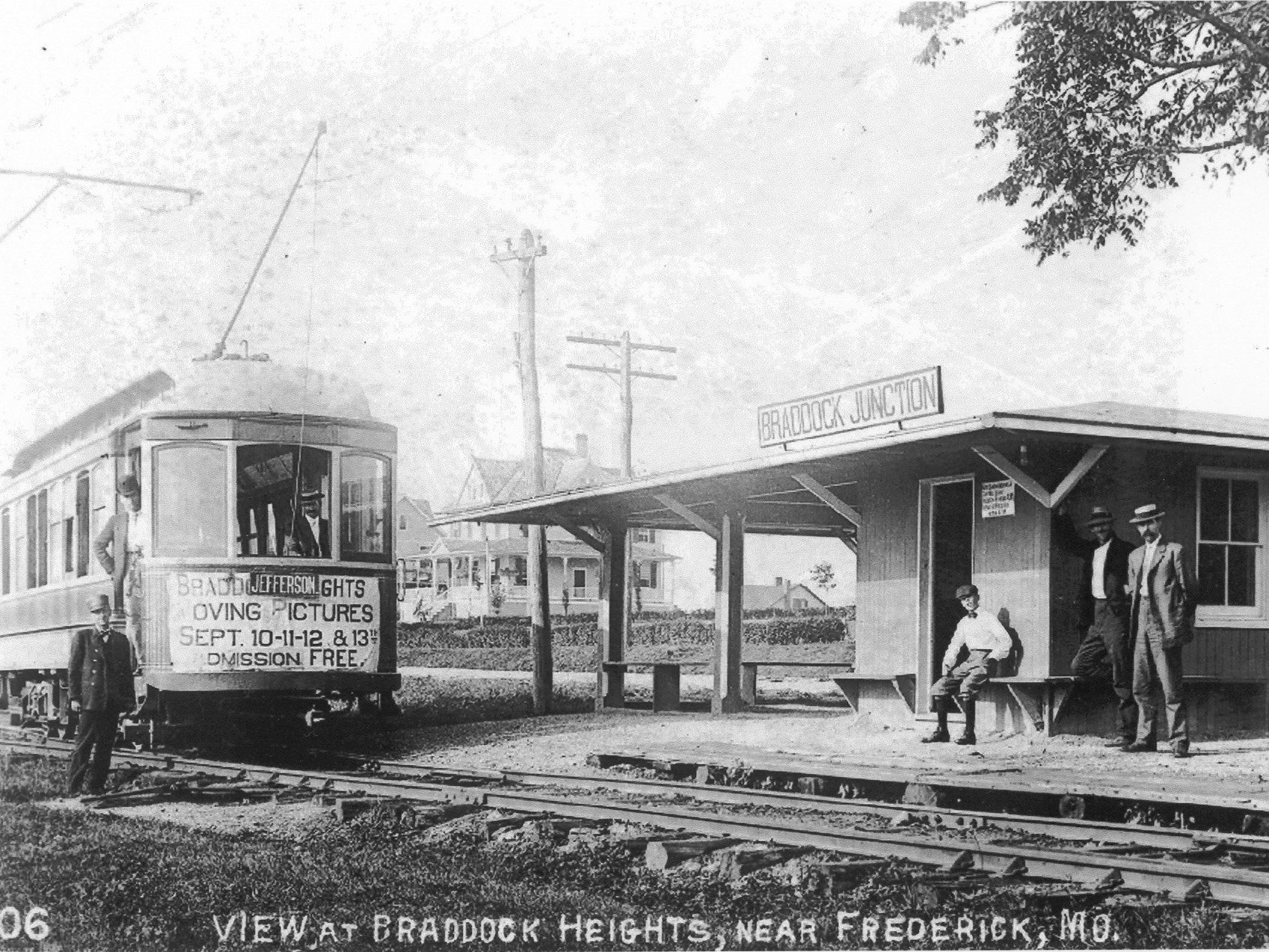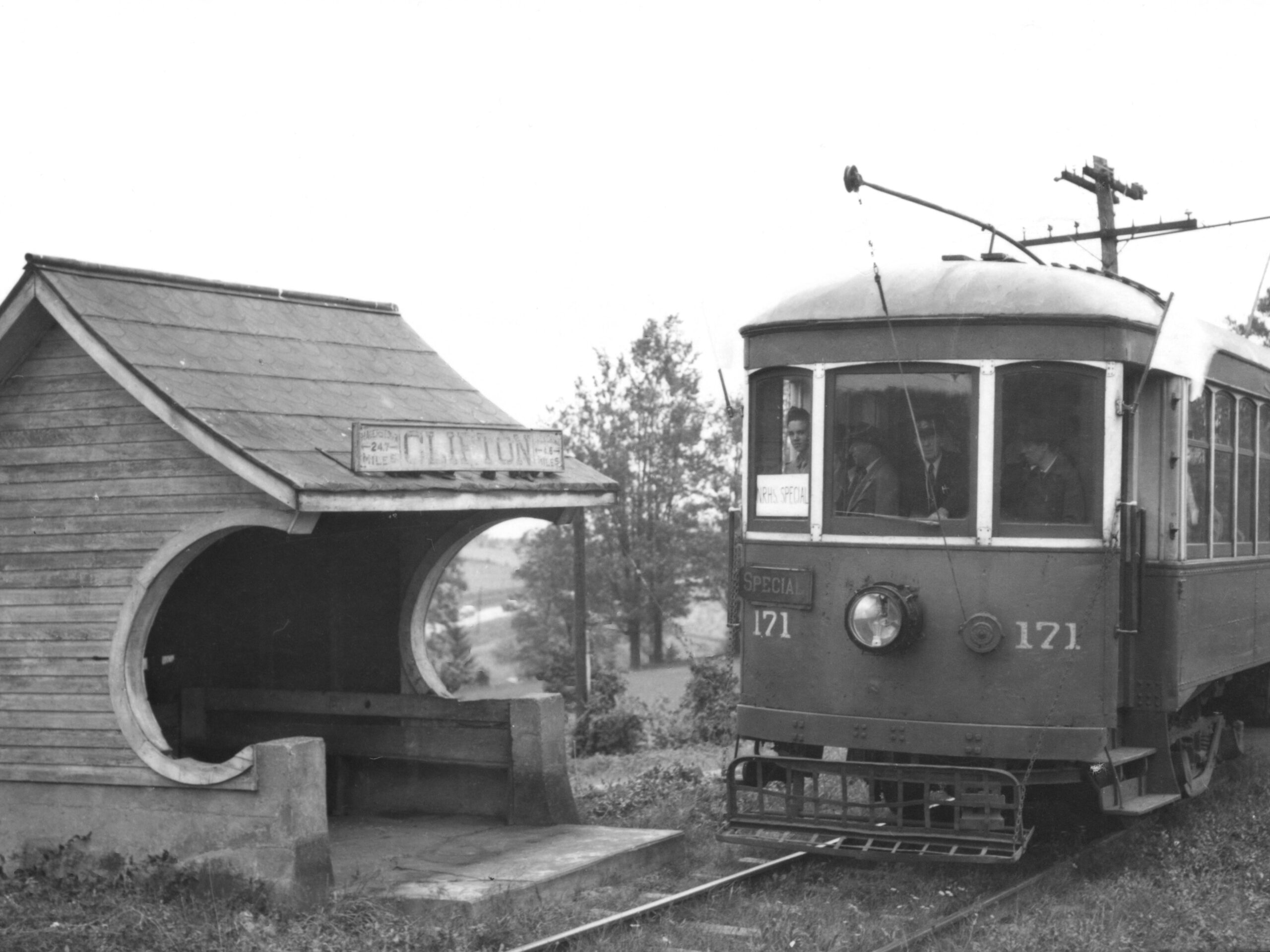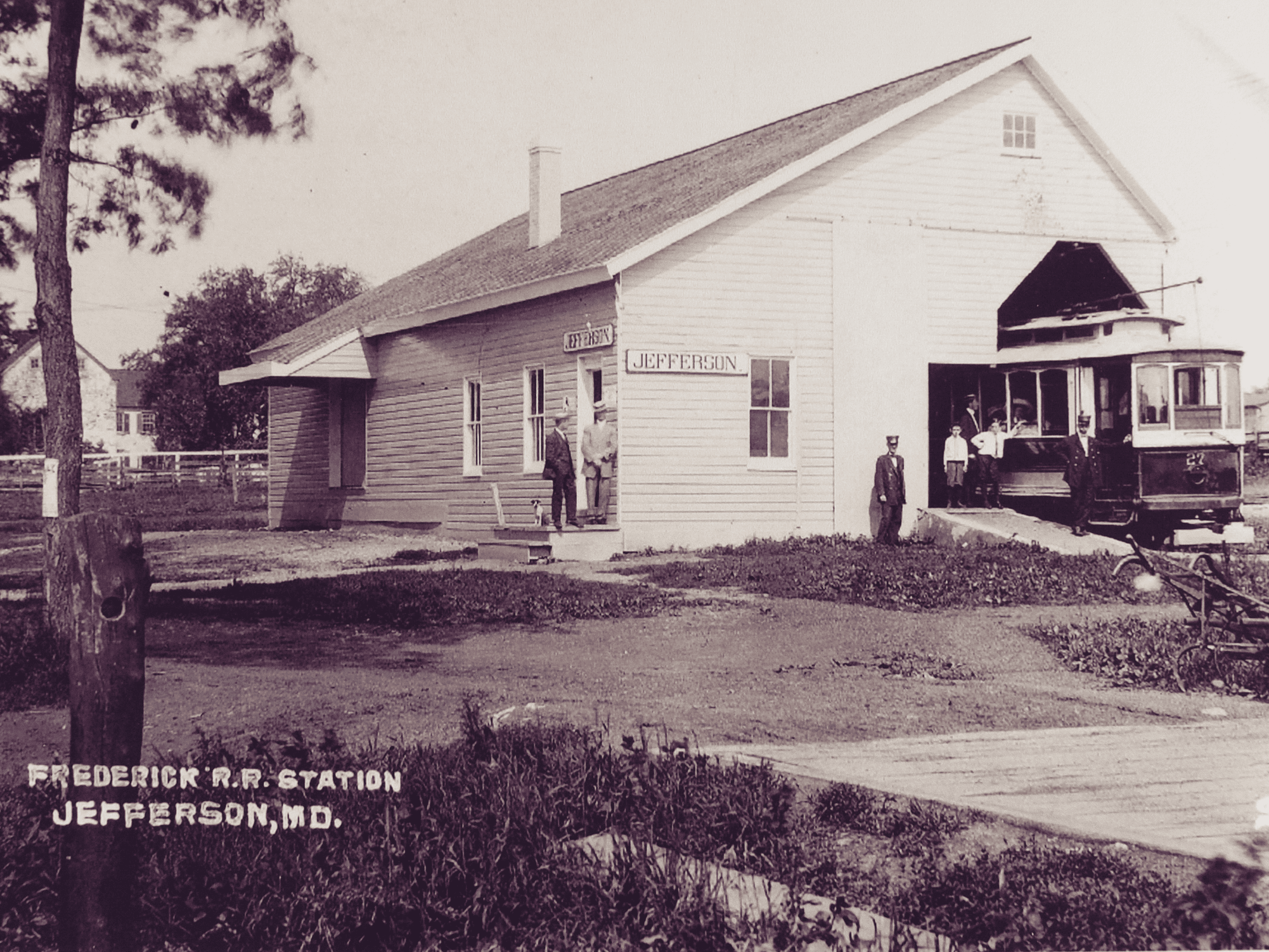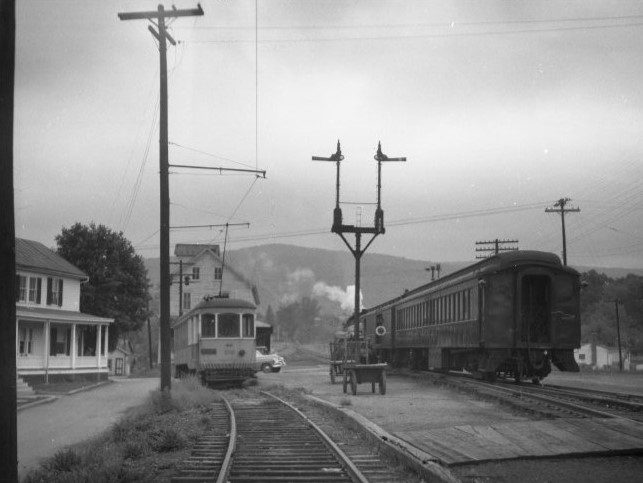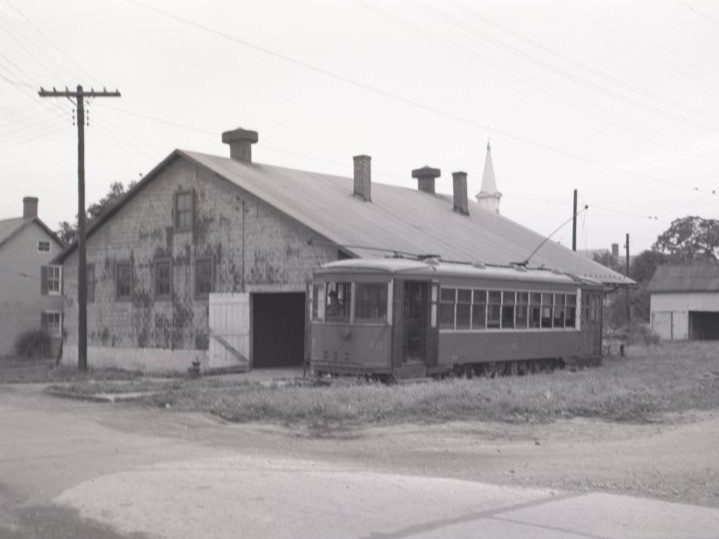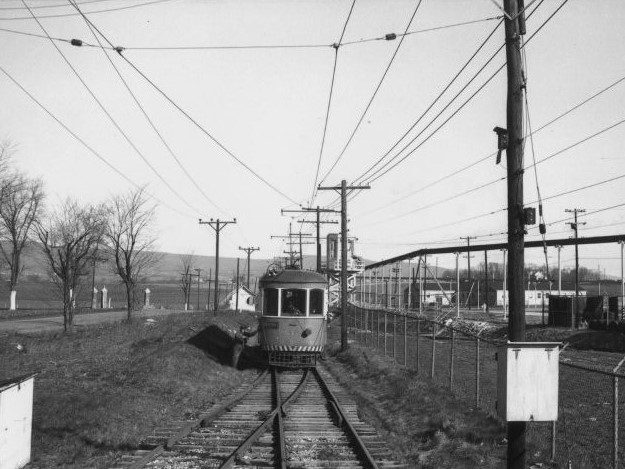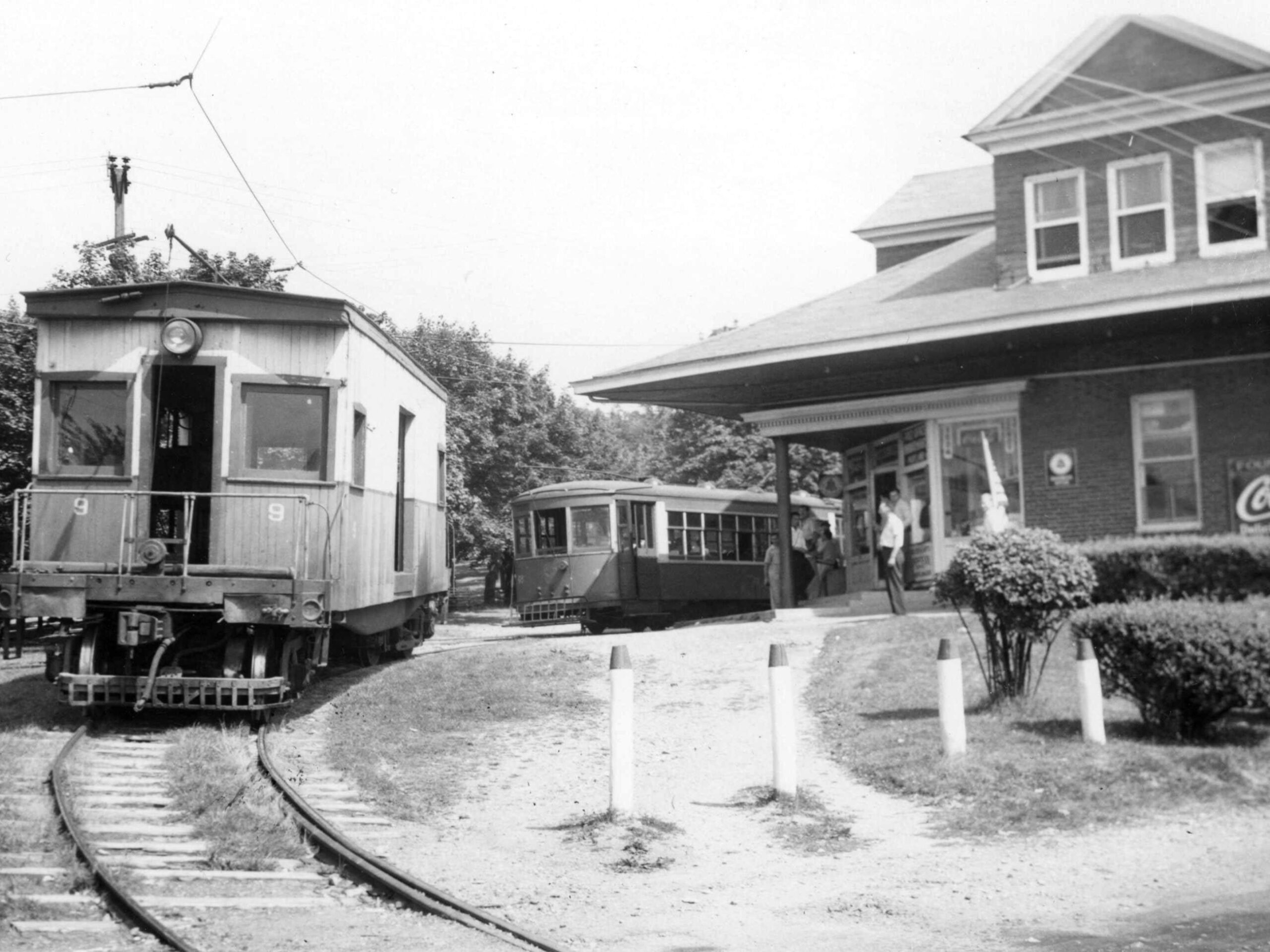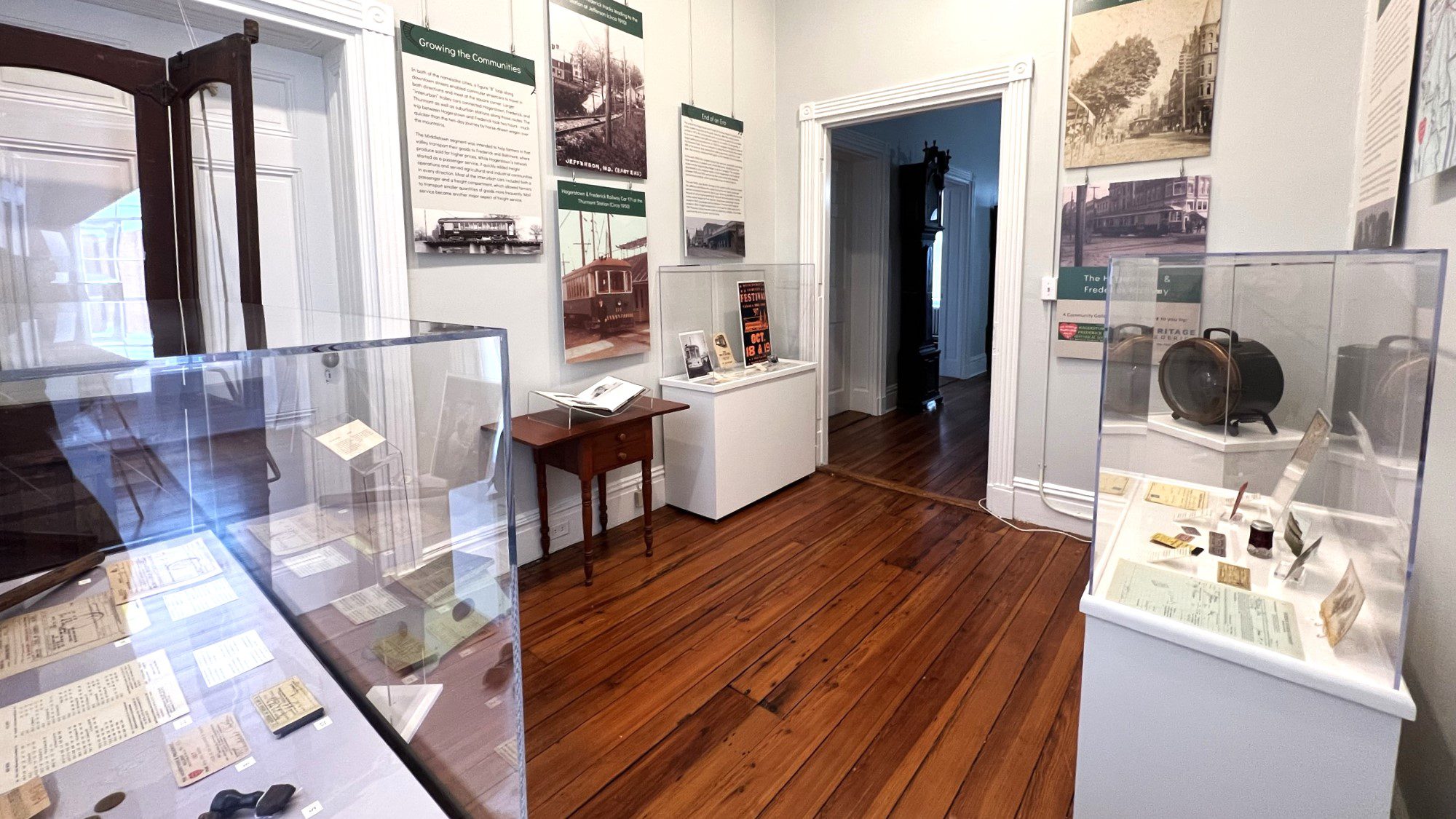
The Hagerstown and Frederick Railway

From 1896 until 1954, a network of interurban trolley lines were built linking communities across Frederick and Washington Counties. This exhibit presents the history of these electric railways and how they changed the landscape and communities of Frederick County. View historical photographs and artifacts from the trolleys and a map showing the various routes that comprised the overall system at its height of operation. This display is Heritage Frederick’s 2023 Community Gallery exhibition, presented in partnership with the Hagerstown and Frederick Railroad Historical Society (HFRHS).
The Interurban Trolley
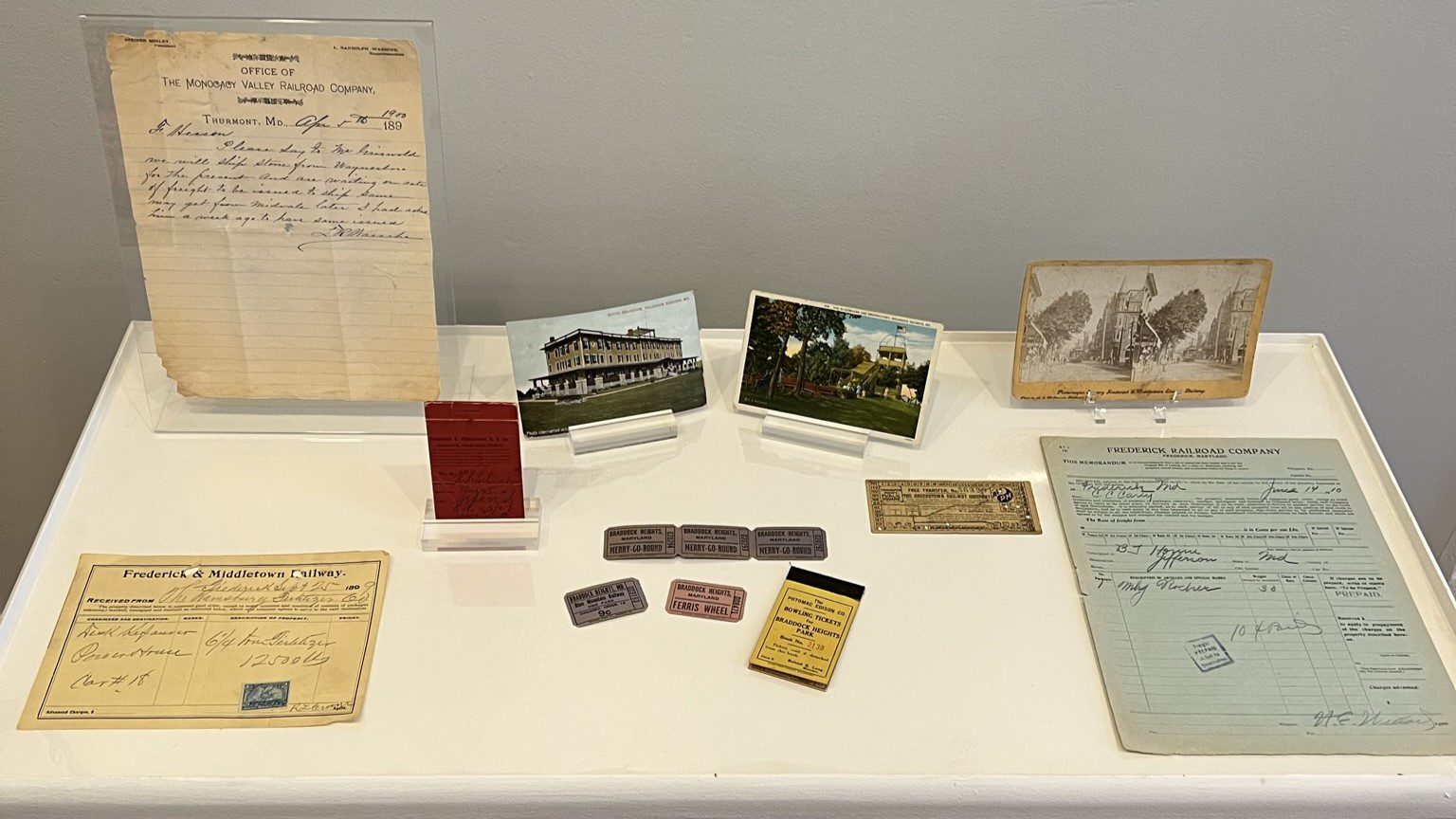
Trolleys appeared in Frederick in 1896. Initially, there were more than a dozen small, independent companies that each served small parts of Frederick or Washington Counties, but there were three prominent entities that consumed their smaller rivals until only one company remained. The earliest was a steam-powered short-line established in 1887, which connected the Catoctin Iron Furnace to the existing Western Maryland railroad in Thurmont; it expanded to Frederick in October 1908. Separately, the Hagerstown Railway started building a downtown commuter trolley route in the spring of 1896. In the summer of that same year construction began in Frederick on the Frederick & Middletown Railway (F&M).
The F&M began as a service carrying tourists from Frederick to the top of Catoctin Mountain before being extended into Middletown itself. In fact, the railway’s board of directors created the Braddock Heights resort and amusement park on the mountaintop chiefly as an attraction that would draw passengers from nearby cities to ride the trolley. In 1904, the Hagerstown Railway built an extension over South Mountain to connect its route with Myersville and subsequently began offering trips between Hagerstown and Frederick.
In 1909 the F&M acquired the steam railroad to Thurmont and renamed the whole system the Frederick Railroad. In 1913, the Frederick Railroad merged with the Hagerstown Railway to form the Hagerstown & Frederick Railway Company, which included 87 ½ miles of track.
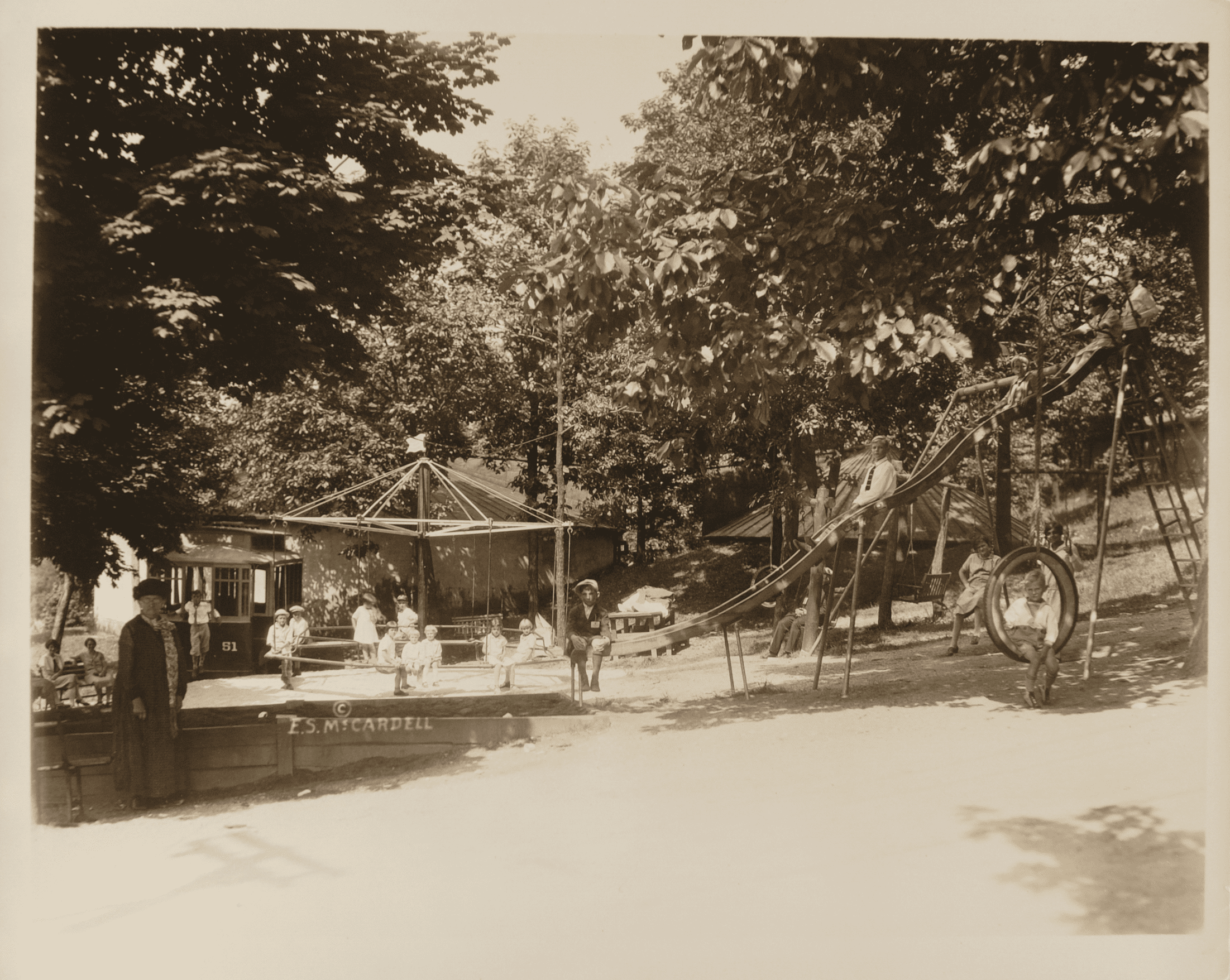
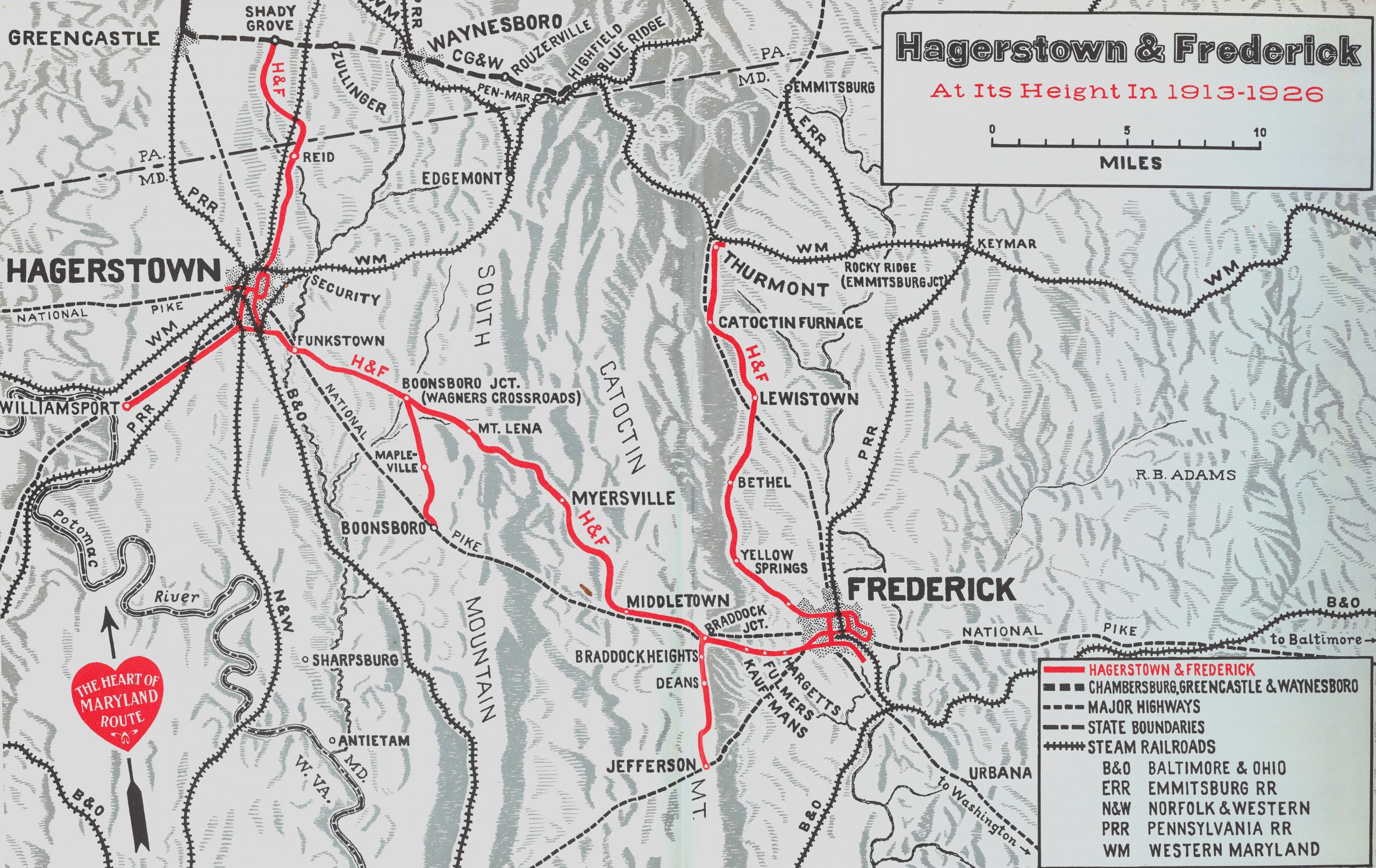
Growing the Communities
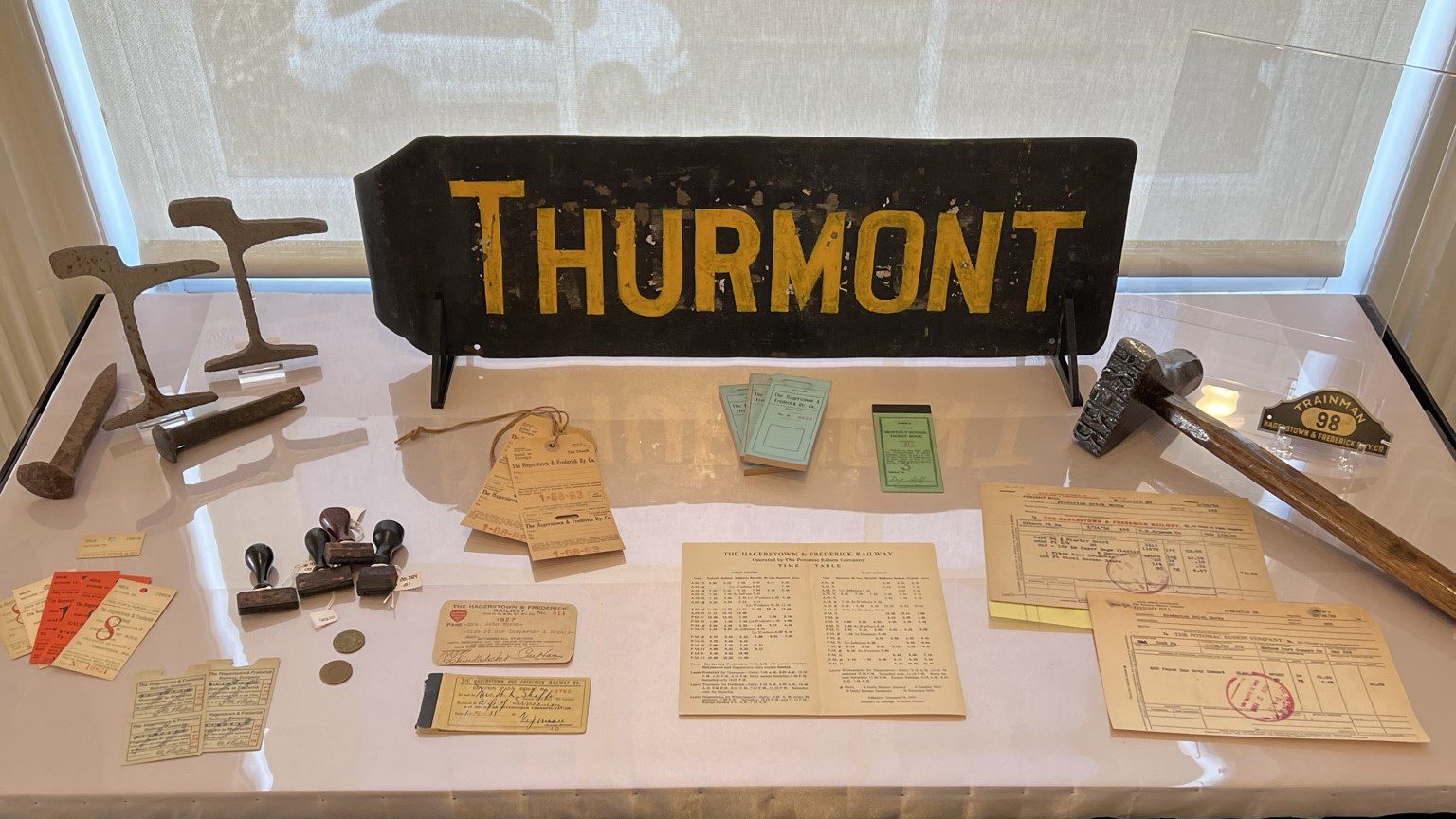
In both of the namesake cities, a figure “8” loop along downtown streets enabled commuter streetcars to travel in both directions and meet at the square corner. Larger “interurban” trolley cars connected Hagerstown, Frederick, and Thurmont as well as suburban stations along those routes. The trip between Hagerstown and Frederick took two hours – much quicker than the two-day journey by horse-drawn wagon over the mountains.
The Middletown segment was intended to help farmers in that valley transport their goods to Frederick and Baltimore, where produce sold for higher prices. While Hagerstown’s network started as a passenger service, it quickly added freight operations and served agricultural and industrial communities in every direction. Most of the interurban cars included both a passenger and a freight compartment, which allowed farmers to transport smaller quantities of goods more frequently. Mail service became another major aspect of freight service.
End of an Era
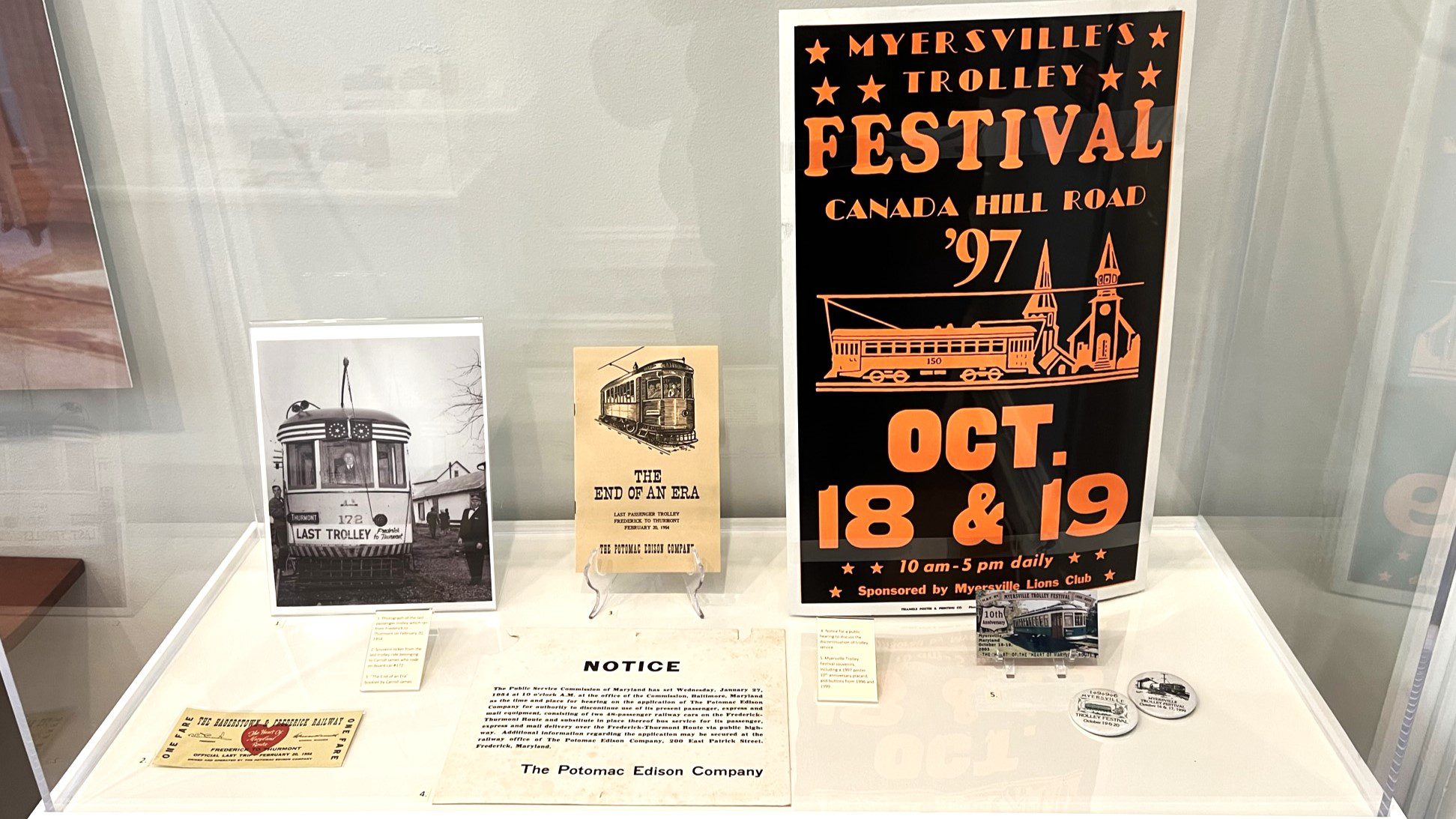
The end of the Hagerstown and Frederick Railway began long before the trolley system experienced its peak ridership. After the railway system unified in 1913, the company focused on purchasing electricity providers to ensure it always had sufficient power for its system. Consequently, it began selling excess electricity. In 1922 the company changed its name to the Potomac Public Service Company to reflect the fact that by then nearly 88% of its revenue was coming from selling electricity. Less than a year later, the company renamed itself again as the Potomac Edison Company.
In the early 1920s the company began bus services, eventually controlling most operations in western and central Maryland, including local city routes and the regional Blue Ridge Lines Bus Company. The company abandoned in-city streetcar routes in both Hagerstown and Frederick between 1928 and 1935 and served the communities with company-owned buses instead, which could make stops at more locations.
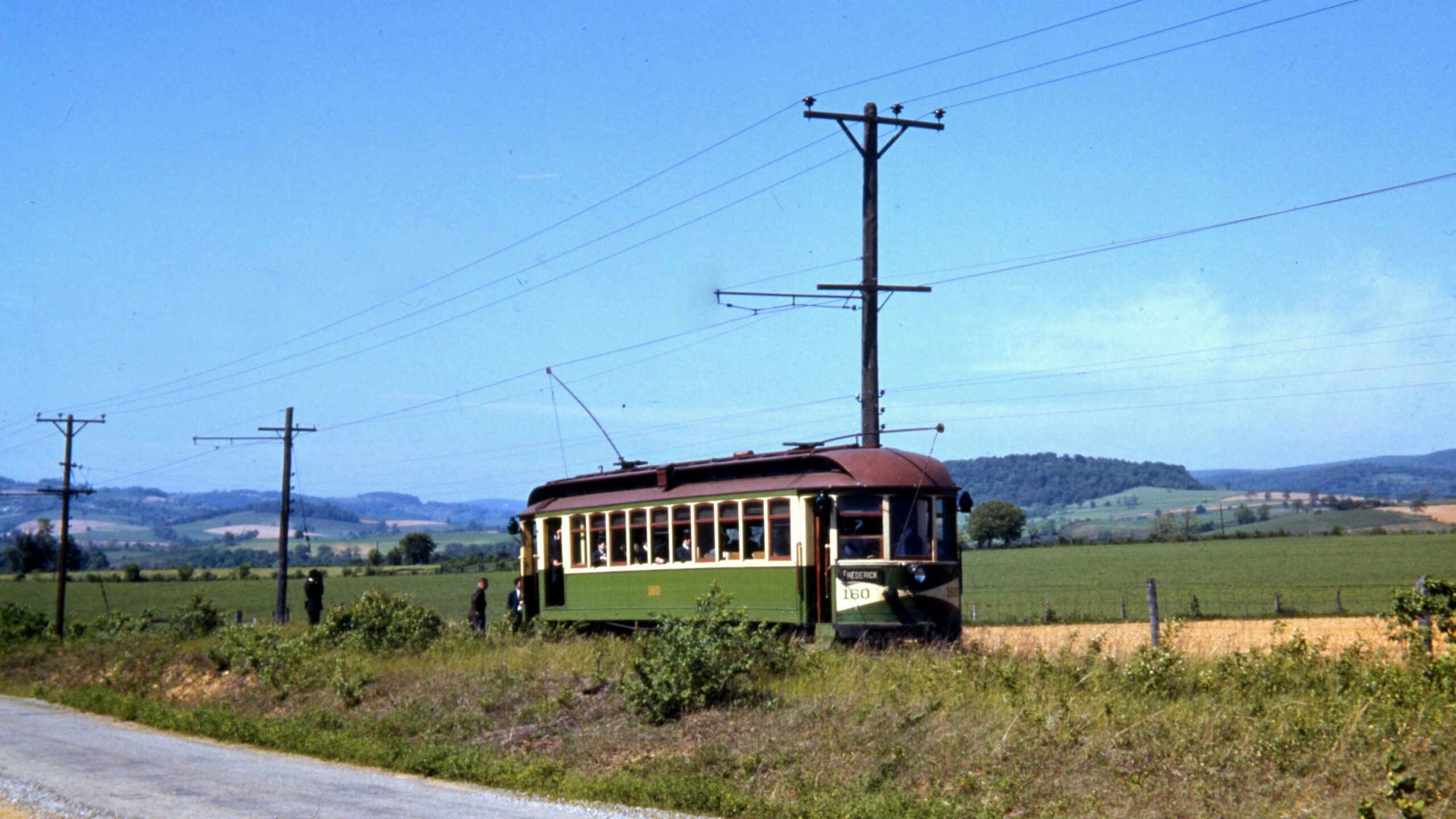
The mid 1940s saw drastic change on the system as the company closed the Jefferson and Myersville routes. During the war years, passenger service increased temporarily due to gas rationing, but after the war and the end of rationing the automobile became far more popular and the trolley system began its final decline. Hagerstown passenger service ended in 1947; passenger service between Thurmont and Frederick ended in 1954. Freight transportation continued for a few years, but in 1961 Potomac Edison became solely an electricity company. Four trolley cars from the entire system survive today.



